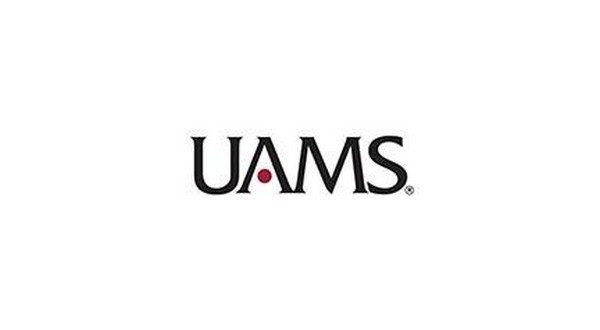
10 Feb Emerging Research on Telehealth Adoption and Its Impact on Chronic Disease Management
in Telemedicine
The healthcare sector is rapidly evolving with the integration of telehealth technologies. Remote patient monitoring (RPM) is increasingly pivotal in managing chronic conditions, offering real-time insights into patient health. Virtual medical assistants are playing a crucial role in reducing administrative tasks and enhancing care delivery.

Young adult calling doctor on videocall telehealth, talking about healthcare treatment on videoconference and telemedicine. Meeting on remote teleconference call with physician, online appointment.
The expansion of telehealth has transformed how patients interact with healthcare providers, particularly in managing chronic diseases. By leveraging RPM, healthcare professionals can monitor patients’ health metrics remotely, ensuring timely interventions and improving patient outcomes. The integration of virtual medical assistants, such as those offered by www.honesttaskers.com, provides a streamlined approach to managing administrative tasks, allowing providers to focus more on patient care.
Key benefits of telehealth and RPM for chronic conditions
One significant advantage of telehealth is the increased accessibility it provides to patients with chronic conditions. This technology reduces the need for frequent in-person visits, saving travel time and costs for patients. With remote monitoring devices, patients can have their vital signs tracked continuously, leading to better adherence to treatment plans and enhanced overall management of their conditions.
The continuous flow of health data from RPM devices enables healthcare teams to detect deviations in patients’ health metrics early. Such real-time tracking allows for prompt interventions, potentially preventing complications and hospitalizations. Moreover, this proactive approach facilitates better communication between patients and healthcare providers, fostering a more engaged and informed patient population.
Additionally, telehealth has demonstrated cost-effectiveness for healthcare providers who effectively utilize these platforms. By reducing the need for physical infrastructure and enabling efficient resource allocation, telehealth services help minimize operational costs while maintaining high-quality care delivery. This financial benefit further encourages the adoption of telehealth technologies across various healthcare settings.
Practical insights from current studies
Innovations in wearable technology and connected devices enhance remote monitoring capabilities. These advancements allow for comprehensive tracking of health parameters, offering valuable insights into managing conditions such as hypertension and diabetes. Patients using these technologies often experience improved outcomes due to continuous monitoring and timely adjustments to their treatment plans.
The integration of RPM in chronic disease management has shown promising results in terms of patient outcomes. Continuous monitoring aids in maintaining stable blood pressure levels in hypertensive patients and helps diabetes patients manage glucose levels more effectively. Such positive impacts underscore the importance of incorporating RPM as a standard practice in chronic disease management.
Cost-effectiveness is another significant consideration. By reducing unnecessary hospital visits and optimizing resource utilization, telehealth platforms present a viable solution for healthcare providers looking to enhance efficiency without compromising quality. As a result, more practices are investing in these technologies to improve patient care while controlling expenses. To fully realize these benefits, healthcare providers are increasingly turning to virtual support systems that can help manage the administrative burden associated with telehealth implementation.
The role of virtual medical assistants
Virtual medical assistants are revolutionizing administrative processes within healthcare practices by handling tasks such as scheduling appointments and follow-ups. They facilitate smooth operations by managing routine communications and providing timely reminders, allowing healthcare professionals to dedicate more time to direct patient care.
In addition to streamlining administrative functions, virtual medical assistants play a vital role in patient education by delivering curated health information. This support system empowers patients with knowledge about their conditions, promoting adherence to treatment plans and encouraging proactive health management.
The integration of virtual medical assistants with telehealth platforms has created a more comprehensive healthcare delivery system. These assistants can manage remote patient monitoring data, flag concerning trends for provider review and facilitate seamless communication between patients and healthcare teams. Their ability to handle routine tasks while maintaining accuracy and compliance with healthcare regulations makes them an invaluable asset in modern healthcare settings.
Implementation considerations
When implementing telehealth solutions, it is crucial for healthcare practices to invest in secure platforms that ensure patient data privacy. Robust security measures protect sensitive information from breaches and build trust between providers and patients. Additionally, training staff on digital tools and troubleshooting common issues faced by patients ensures smooth transitions into remote care environments.
A collaborative environment where providers, patients and virtual assistants communicate routinely is essential for maximizing the benefits of telehealth services. Regular feedback loops facilitate continuous improvement in service delivery and help address any challenges promptly. This collaborative approach also fosters stronger relationships between all parties involved.
Healthcare practices should consider integrating virtual medical assistants as part of their telehealth strategies to optimize administrative workflows further. By doing so, they can enhance efficiency while maintaining high standards of care delivery throughout their operations.
Long-term outlook
The future of telehealth appears promising as ongoing research continues to explore its efficacy across diverse populations. As evidence mounts regarding its positive impact on chronic disease management, there is potential for expansion into other complex or long-term conditions where traditional approaches may fall short.
The growing acceptance of remote care by insurers and policymakers indicates an increasing recognition of telehealth’s value within the broader healthcare ecosystem. As regulatory frameworks adapt accordingly, more providers will likely adopt these technologies as integral components of their service offerings.
Continued advancements in technology coupled with rigorous research efforts will undoubtedly refine existing models further while uncovering new opportunities within this dynamic field over time.c
————-
The information on MedicalResearch.com is provided for educational purposes only, and is in no way intended to diagnose, cure, or treat any medical or other condition.
Some links are sponsored. Products are not warranted or endorsed.
Always seek the advice of your physician or other qualified health and ask your doctor any questions you may have regarding a medical condition. In addition to all other limitations and disclaimers in this agreement, service provider and its third party providers disclaim any liability or loss in connection with the content provided on this website.
Last Updated on February 10, 2025 by Marie Benz MD FAAD
11
link






